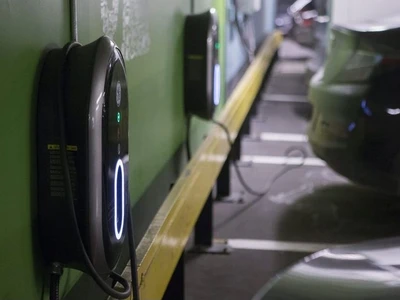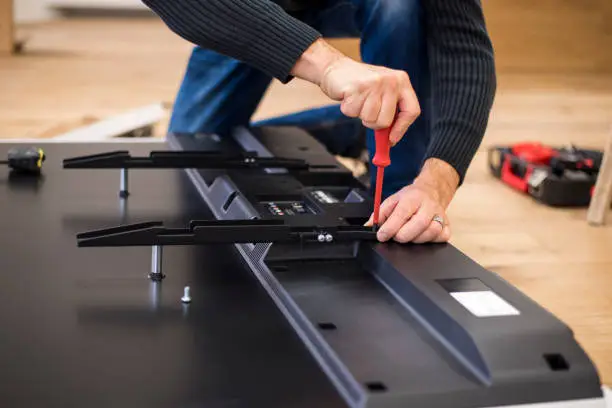The transition to electric vehicles (EVs) is accelerating globally, with more people recognizing the environmental and economic benefits of making the switch. However, owning an electric vehicle also necessitates considering how and where to charge it. Installing an EV charger at home is not only convenient but also essential for EV owners who want to ensure their vehicle is always ready for the next journey. This guide aims to provide you with all the information you need to get started with home EV charging, from selecting the right charger to understanding the installation process.
Why Install a Home Charger?
Charging your EV at home is akin to charging your smartphone. You can do it overnight, ensuring your vehicle is fully charged and ready to go each morning. Home charging eliminates the need to rely on public charging stations, saving you time and providing peace of mind.
Types of Home EV Chargers
There are two main types of EV chargers for home use: Level 1 and Level 2. Level 1 chargers utilize a standard household outlet and are typically slower, while Level 2 chargers require a 240V supply and offer much faster charging speeds. Choosing the right type depends on your vehicle’s requirements and your daily driving needs.
Selecting the Right EV Charger for Your Home
Understanding Your Charging Needs
Before purchasing a charger, consider your vehicle’s charging capabilities, your daily driving distance, and how quickly you need to recharge. This will help you determine whether a Level 1 charger suffices or if a Level 2 charger is more appropriate.
Features to Look For
When shopping for an EV charger, look for features such as programmable scheduling, energy usage tracking, and Wi-Fi connectivity. These features can enhance your charging experience by allowing for more efficient energy use and providing valuable insights into your charging habits.
The Installation Process
DIY vs. Professional Installation
While some EV owners may opt for a do-it-yourself approach, especially with Level 1 chargers, professional installation is recommended for Level 2 chargers due to the need for electrical upgrades and safety considerations.
What to Expect During Installation
A professional installer will assess your home’s electrical system, install the necessary 240V circuit, and mount the charger. The process typically takes a few hours, after which you’ll be ready to charge your EV conveniently at home.
EV Charger at Home: A Convenient Solution for Electric Vehicle Owners
Electric vehicles (EVs) are becoming increasingly popular as the world shifts towards more sustainable transportation options. As more people make the switch to EVs, the demand for convenient charging solutions at home has also risen. Installing an EV charger at home provides EV owners with the convenience of charging their vehicles overnight, ensuring that they always start their day with a full battery.
Why Install an EV Charger at Home?
- Convenience: Having an EV charger at home eliminates the need to visit public charging stations regularly. Instead, EV owners can simply plug in their vehicles overnight and wake up to a fully charged battery each morning.
- Cost Savings: While public charging stations often come with fees, charging at home can be significantly cheaper, especially if you take advantage of off-peak electricity rates. Over time, these savings can add up, making home charging a cost-effective option for EV owners.
- Flexibility: With a home EV charger, you have the flexibility to charge your vehicle whenever it’s convenient for you. Whether you need a quick top-up or a full charge, you can do so without having to wait in line or adjust your schedule to fit the availability of public charging stations.
- Peace of Mind: Knowing that you have a dedicated charging solution at home can provide peace of mind, especially during emergencies or unexpected situations. You won’t have to worry about finding a charging station in unfamiliar areas or facing long wait times during peak hours.
Choosing the Right EV Charger for Your Home
- Level 1 Chargers: These chargers use a standard 120-volt household outlet and are often included with the purchase of an EV. While convenient for occasional use, they are relatively slow and may not be suitable for daily charging needs.
- Level 2 Chargers: For faster charging times, many EV owners opt for Level 2 chargers, which require a 240-volt outlet. These chargers can typically add around 25 miles of range per hour of charging, making them ideal for overnight charging or for topping up during the day.
- Smart Chargers: Smart chargers offer additional features such as scheduling charging times, monitoring energy usage, and integrating with smart home systems. These advanced functionalities provide EV owners with greater control and efficiency when charging their vehicles at home.
Cost Considerations
Initial Investment
The cost of home EV charging can vary widely, depending on the charger model and the complexity of the installation. While Level 1 chargers are generally less expensive, investing in a Level 2 charger can offer faster charging speeds and greater convenience.
Potential Savings and Incentives
Despite the upfront costs, charging your EV at home can lead to significant savings over time compared to fueling a conventional gasoline vehicle. Additionally, some governments offer incentives or rebates for purchasing and installing EV charging equipment, further reducing the overall cost.
The Convenience of Home EV Charging
Home EV charging offers unparalleled convenience for electric vehicle owners. With an EV charger installed at home, drivers can conveniently recharge their vehicles overnight while they sleep, ensuring they start each day with a full battery. This eliminates the need to make frequent trips to public charging stations, saving time and providing peace of mind. Additionally, home EV chargers can be tailored to fit the specific needs of the owner, whether it’s a standard Level 2 charger for overnight charging or a more advanced fast charger for quick top-ups during the day.
Installation and Cost Considerations
Installing an EV charger at home is a relatively straightforward process, but it does require some planning and investment. Homeowners will need to consider factors such as the location of the charger, the electrical capacity of their home, and any necessary permits or approvals required by local authorities. While the initial cost of purchasing and installing an EV charger may seem daunting, it is often offset by long-term savings on fuel and maintenance costs. Furthermore, some government incentives and rebates are available to help subsidize the cost of EV charger installation, making it a more affordable option for many homeowners.
Conclusion
Installing an EV charger at home is a crucial step for electric vehicle owners, offering unparalleled convenience and efficiency. By understanding the different types of chargers, selecting the right one for your needs, and navigating the installation process, you can enjoy the benefits of home charging and contribute to a more sustainable future. With the right preparation and investment, your home can become a personal charging station, ready to power your EV adventures.



